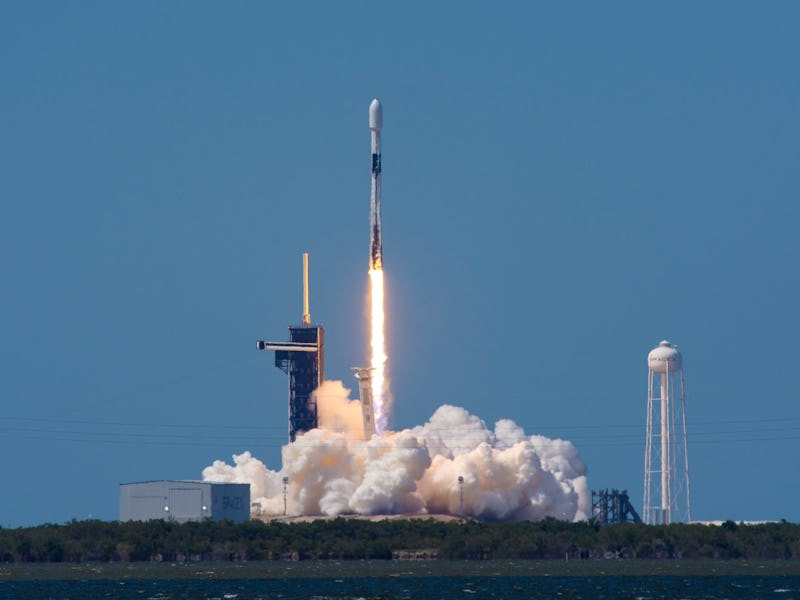When will Starlink be available? Elon Musk details SpaceX beta test
SpaceX is planning to roll out a beta test for its internet connectivity constellation.

Starlink, SpaceX's internet connectivity constellation, is almost here.
The ambitious project, designed to offer satellite internet at high speed and low latency, took another step toward reality Wednesday when SpaceX launched a Falcon 9 rocket carrying 60 satellites from the Kennedy Space Center in Florida at 3:30 p.m. Eastern time. It's the seventh batch of Starlink craft, meaning the constellation now has 420 satellites.
On Thursday, CEO Elon Musk revealed more information about when the service will become available. Writing on his Twitter page, where he has over 33 million followers, Musk declared after the launch:
Private beta begins in ~3 months, public beta in ~6 months, starting with high latitudes
Musk's comments.
It's a big step forward for the ambitious project, which will enable users to point a pizza box-sized receiver to the sky and receive internet access without depending on on-the-ground infrastructure. Starlink is aiming to offer gigabit internet speeds and latency between 25 and 35 milliseconds, according to a 2016 filing with the FCC. In May 2019, Musk suggested it could reach below 10 milliseconds over time. That means beyond offering high internet speed, it will offer super-fast reaction times that make it ideal for playing video games, hosting video calls, and other time-sensitive applications.
That would place it in a much better position than other satellite internet operators. A 2013 analysis found competing providers offer latencies of around 638 milliseconds, around 20 times slower than wired networks. Their average speed is also around 30 megabits per second, although rural Americans that spoke to Inverse in March claim it can be much lower.
For those without dependable local access, a satellite may be the only option. SpaceX has been aiming to convince the industry that its constellation would be low latency, which could help it unlock up to $16 billion in American federal subsidies. It claims that Starlink would offer lower latencies due to the sheer number of satellites – up to 42,000, more than the around 5,000 satellites total currently in orbit – and its low altitude of 550 kilometers above sea level that brings it closer to users.
Beyond offering eager consumers a sneak peek at the latest technology, Starlink's beta test could answer the question of whether the plan will be a success.
SpaceX Starlink: when will it be available in my area?
For at least one person, it seems, Starlink is already available. In October 2019, Musk claimed he sent a Twitter post through the nascent service.
For a broader section of the population, Starlink could be available relatively soon. The company's website previously claimed it would offer coverage for the northern United States and Canada after six launches, expanding to most of the rest of the global population after 24 launches. This was later replaced with a promise to reach the first milestone in 2020 and the second milestone in 2021.
Musk himself said ahead of the first launch in May 2019 that six more launches would provide minor coverage, and 12 more would provide moderate coverage.
It seems Musk has now placed a more fixed timeline on the rollout after this week's launch. A private beta is set to start in around three months, which would place it somewhere near late July 2020. A public beta is set to start in around six months, which means a launch date of around October 2020.
The latest Twitter posts suggest this would actually cover more area than the initially-planned rollout. When asked by a Twitter user called "flcnhvy" if Germany counted as high-latitude, Musk confirmed that it does. This suggests it could cover more than just the United States and Canada in its early stages, although details are likely to become clearer at a later stage.
Musk's comments.
As the Starlink Twitter post suggested these timescales are not completely fixed in place, there's always the chance they move depending on progress. But with the eighth batch of 60 satellites expected to launch in May, it seems SpaceX won't be waiting to expand its fleet further.